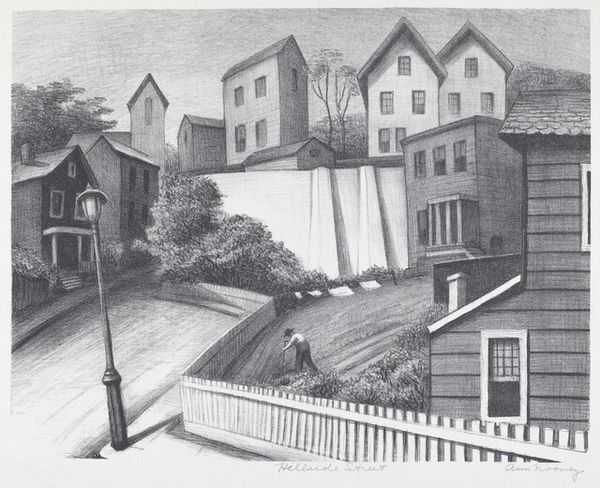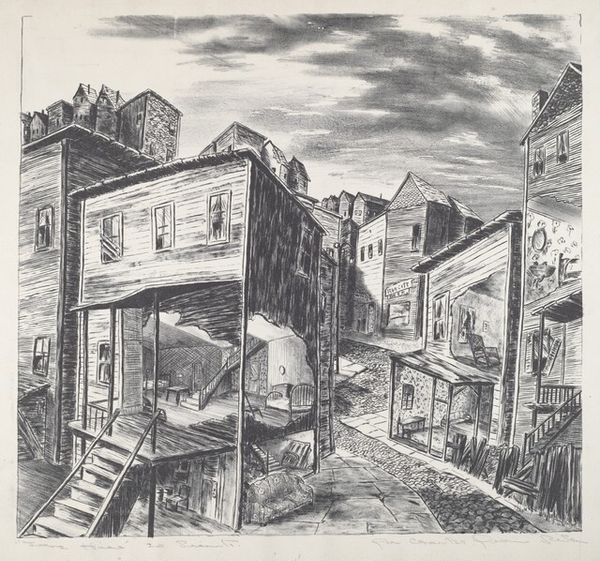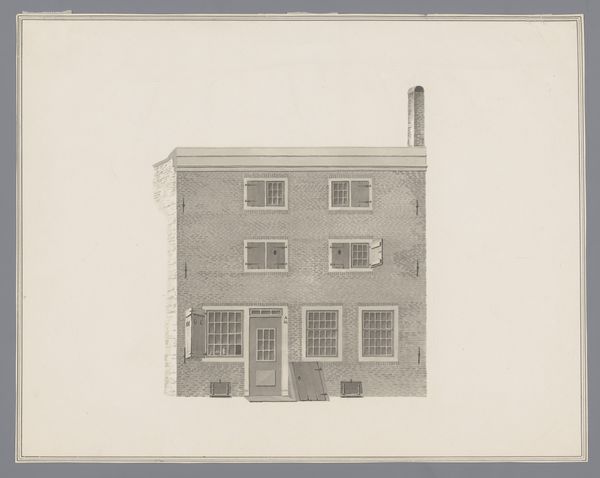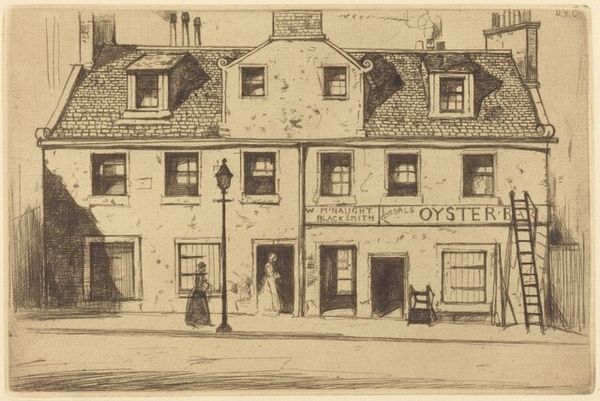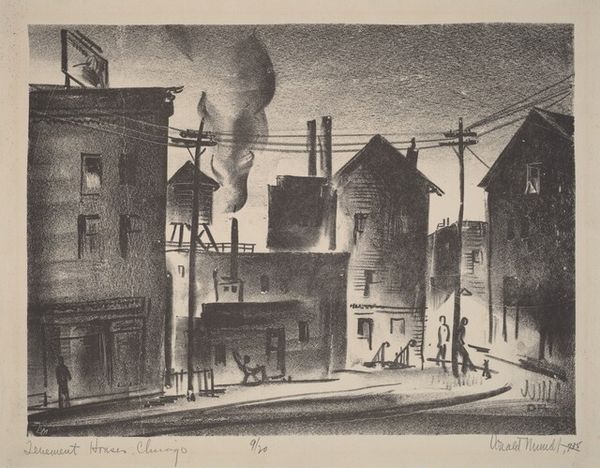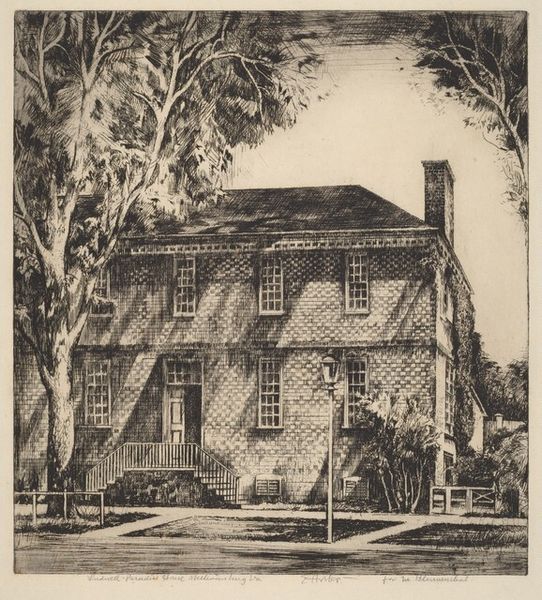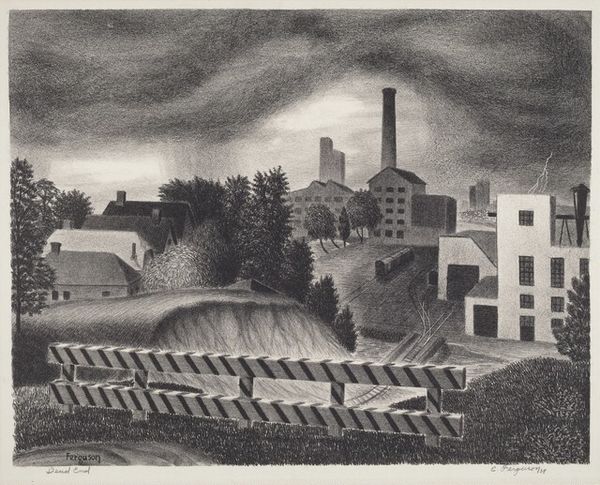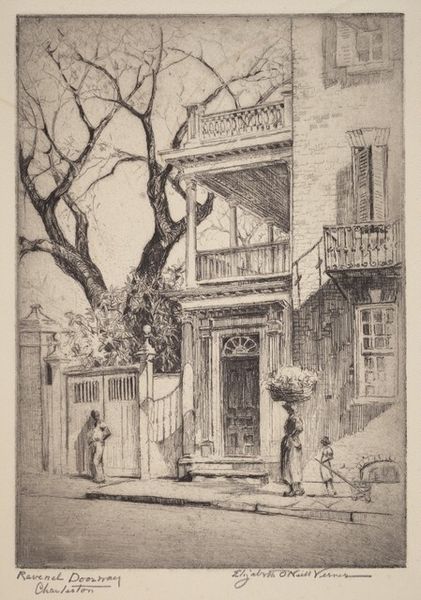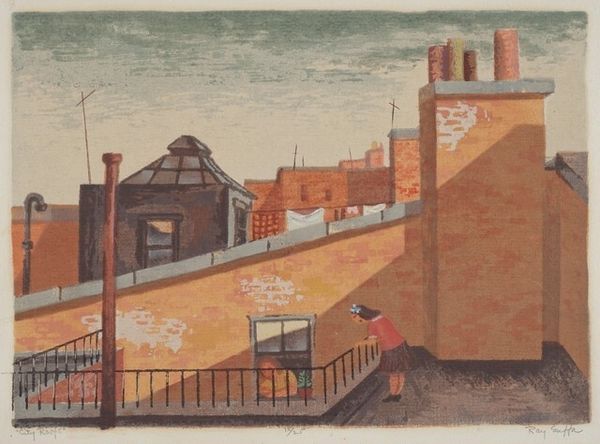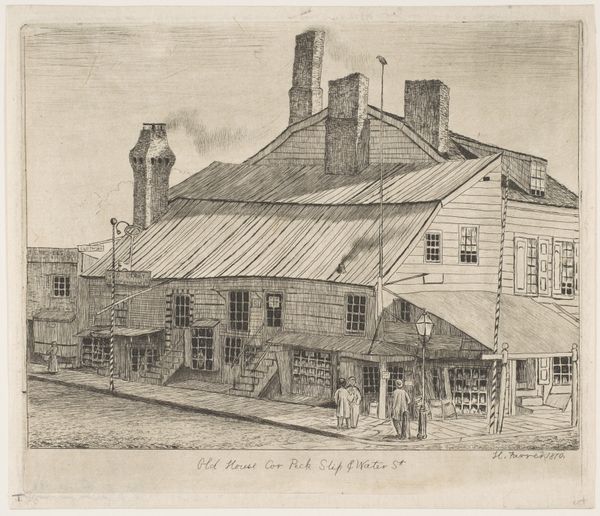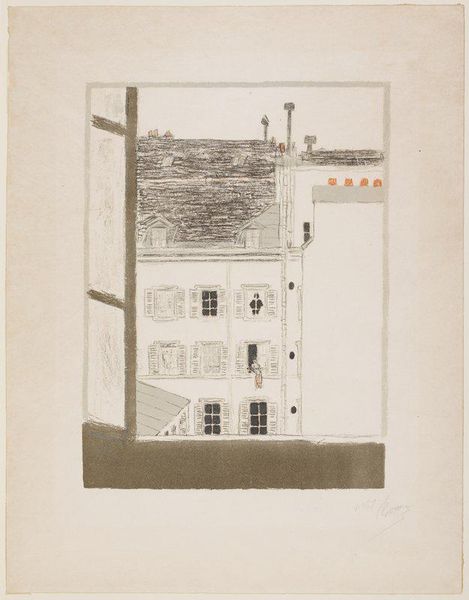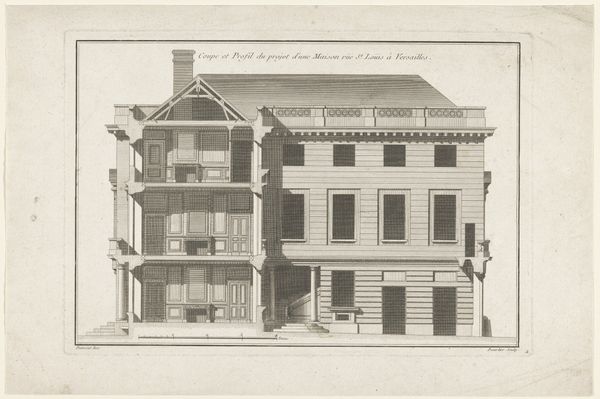
drawing, print, pencil, graphite
#
drawing
# print
#
pencil drawing
#
pencil
#
graphite
#
cityscape
#
realism
Dimensions: image: 218 x 273 mm sheet: 283 x 365 mm
Copyright: National Gallery of Art: CC0 1.0
Curator: Standing before us is A. Grant Arnold's "White House - Washington D.C." created in 1937. It’s rendered in pencil, or graphite, a humble material, yet look at the stark presence it achieves. Editor: My immediate impression is of something both imposing and strangely vulnerable. The almost clinical precision flattens the space; it feels less like a home and more like an architectural diagram or an unsettling monument. Curator: It's a piece produced under the Federal Art Project, a New Deal initiative. Consider the socio-political context: mass unemployment and the government's role in supporting artists. Graphite, an accessible medium, reflects the democratizing impulse of the time, making art affordable. Editor: But what *is* the "White House" he's portraying here? Certainly not *the* White House. That straightforward brick front and stark symmetry—it’s a potent symbol of the "everyman's" home, of Americana in its most basic form. Stripped down. Curator: And meticulously crafted, too, observe the variations in hatching creating subtle tonal shifts, even the textural differentiation suggesting varied materials of bricks, stone and wood. He transforms an ordinary street into an orchestrated set of marks. Editor: Notice the blank windows, almost like vacant eyes. Windows as symbolic 'eyes of the soul' are shuttered off from our gaze and it stirs something deeply uncanny in me. Where should this structure belong in collective imagination? The title directs us, but seems like a misnomer, unsettling rather than enlightening. Curator: I agree. Arnold shows us that "Realism," even with simple tools like pencils and paper, isn't merely representation but interpretation, mediated by an artist, shaped by history and economic pressures. He is, literally, materializing something new. Editor: Perhaps, the starkness invites a critical reading of American ideals. The symbolism becomes sharper under scrutiny. It becomes a ghost of an ideal, and a critical piece on the construction, both physical and social, of that same ideal. Curator: By emphasizing both the economic foundations of this work and his visual rendering, our reading highlights how materials, tools and support systems shapes art. Editor: And as an image, laden with symbolic weight. That very tension elevates what might otherwise be a simple urban sketch. It invites, and arguably demands a second look.
Comments
No comments
Be the first to comment and join the conversation on the ultimate creative platform.
